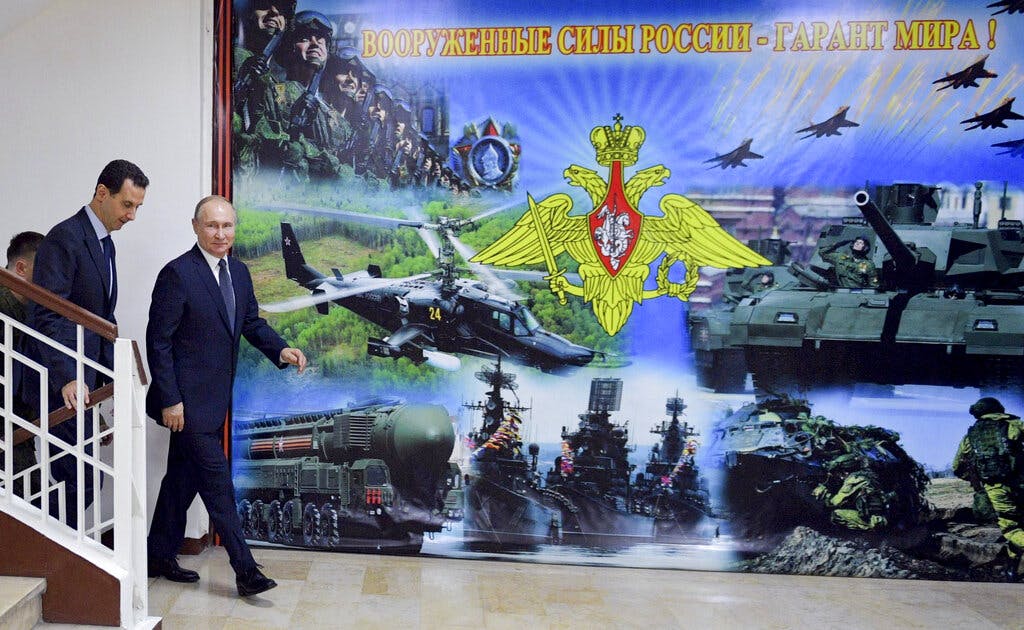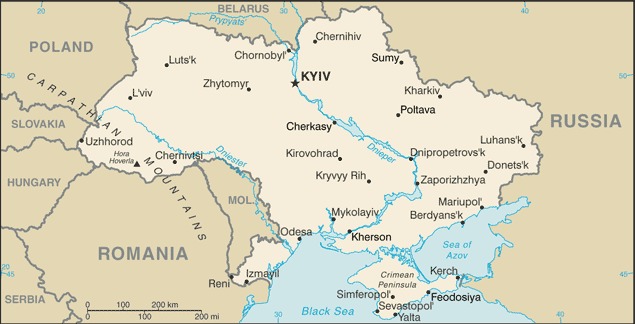Frightful Scenarios Await If Putin Adds Syrian Jihadists to Ukraine Mess
‘Routier’ was the name applied to roving bands of mercenary soldiers who slaughtered, sacked, and burned their way across France during the 100 Years War.

‘Routiers’ en Route to Ukraine
The mediocre performance of the Russian military in Ukraine has forced Vladimir Putin to confront the bitter reality that despite spending the equivalent of billions of dollars on defense over the past 10 years, he hasn’t gotten the army he thought he was paying for.
In response, the Russian strongman has seized upon a radical solution to his military woes. The Wall Street Journal quotes American intelligence sources who say the Russians intend to recruit jihadi terrorists from Syria to serve as a new source of cannon fodder for their war in Ukraine. In this respect — as in so many others — Mr Putin is acting more like a medieval tyrant than the leader of a modern European nation.
“Routier” was the name applied to roving bands of mercenary soldiers who slaughtered, sacked, and burned their way across France during the 100 Years War. In essence, Mr. Putin would be hiring routiers from Syria in the hope they’ll be ruthless enough to achieve in Ukraine what his own soldiers cannot or will not.
These jihadi fighters would doubtless be delighted by the prospect of steady pay, access to rich European booty, and the chance to eviscerate unbelievers. They could introduce Ukraine to a merciless style of Levantine warfare that is marked by the indiscriminate butchery of any man, woman, or child who comes within range of their Kalashnikovs or knives.
Casualty Count
Meanwhile, Reuters is reporting claims by the Ukrainian Ministry of Defense that Russian forces have suffered more than 11,000 combat fatalities since the war began on February 24. While this casualty figure is likely inflated by the Ukrainians for the purposes of information warfare, it still could be quite significant.
Even if the accurate casualty count is only half what the Ukrainians claim, this means that during two weeks of fighting the Russians have lost almost half the number it took them 10 years to lose in Afghanistan.
CNBC is also citing reports that two general officers are counted among the Russian fatalities. One of them, Major General Andrei Sukhovetsky, was a much-decorated airborne commander who was eulogized by Mr. Putin during a speech last week.

Speaking Truth to Power
Things are not going well for the Russian army even in those portions of Ukraine it has managed to capture. In Kherson, the first major Ukrainian city to be captured by Russian forces, thousands of local residents took to the streets in a mass protest against their occupiers.
The London Telegraph posted video footage of civilians waving Ukrainian flags and anti-Putin banners, while an article in The Guardian related how those protesters remained undeterred by Russian warning shots fired into the air.
Mykolaiv
The Russian thrust toward Odessa is stalled on the outskirts of Mykolaiv, an inland port city on the eastern bank of the Southern Buh (Bug) river. Beyond its significance as a major city of almost 500,000 inhabitants, Mykolaiv is also the location of the Varvarivs’kyy Bridge, a vital road crossing over the Southern Buh.
Failure to seize the Varvarivs’kyy Bridge intact will force the Russians 50 miles north to the next road crossing over the Southern Buh at Voznesens’k. And even if the bridge at Voznesens’k were to be captured intact, routing supplies across the river at that location would mean a long detour that would put a serious dent in an overstretched Russian logistics network.
Kiev
From a vantage point on the northern outskirts of Kiev, a veteran Israeli military correspondent, Ron Ben Yishai, has noted the hesitancy displayed by Russian troops in the face of fierce Ukrainian resistance.
The Russians “have yet to enter the city,” Mr Ben Yishai reported, “and they’re very wary of the anti-tank guided missiles that NATO has supplied to the Ukrainians.”
Since the conflict began, the US and European nations have been showering the Ukrainians with thousands of tank-killer missiles. These include the American Javelin, with a range of 2,500 meters, and the Anglo-Swedish Next Generation Light Anti-Tank Weapon, with a range of 800 meters.
Both the Javelin and NLAW are “soft-launch” weapons systems with minimal backblasts that enable them to be fired from within buildings. They also have “fire and forget” guidance systems that let their crews “shoot and scoot” to evade Russian return fire. These features make Javelins and NLAWs the perfect weapons for repelling attacks by armored forces into a built-up area.
Mr. Ben Yishai described the anti-tank barriers and fighting positions constructed by the Ukrainians to block all access routes into Kiev, noting that the area “looks less like a city and more like a fortified zone.”
Strategic analysts are predicting that the main Russian assault on Kiev is coming soon. If and when it does, it promises to be a very bloody affair.

